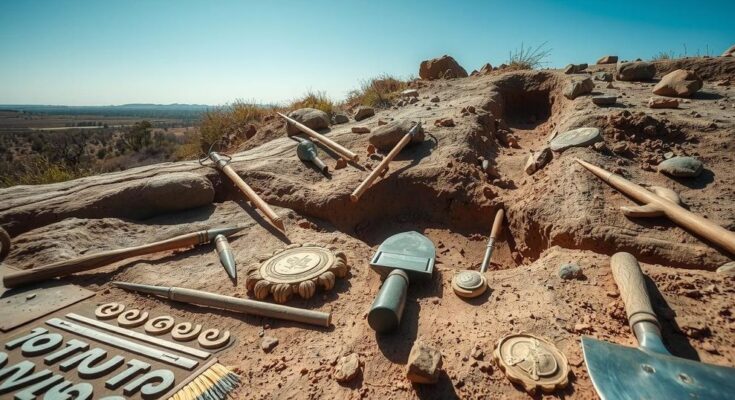In 2017, a groundbreaking archaeological initiative began at Fort McCoy, led by Colorado State University’s Center for Environmental Management of Military Lands. This marked the largest research project of its kind at the site, focusing on Phase III excavations, which aim to recover extensive data while protecting cultural resources from development impacts.
The project concentrated on three archaeological sites near Stillwell Creek, at the convergence of an eroding tank trail. This trail was slated for stabilization to enhance stream health and support military training, making the investigation both a preservation effort and a training enhancement for personnel.
Public engagement was a key aspect of the project, highlighted by a popular tour of the excavation site. Moreover, findings published in The Wisconsin Archaeologist contributed to the wider archaeological dialogue across the Upper Midwest. A visual aspect of the project included the construction of several mock cultural sites, which served as training aids for soldiers, simulating historical heritage resources.
Inspired by the concept of World Heritage sites, mock cultural sites are a strategic addition to Fort McCoy’s training capabilities, providing soldiers with realistic scenarios to prepare them for overseas missions. These sites symbolize the history and cultural significance that military personnel may encounter while deployed.
Fort McCoy hosts various training facilities, like mock villages designed for diverse combat conditions. The mock cultural sites embrace this tradition, integrating archaeological features designed to foster respect for heritage resources and promote stewardship among soldiers. These mock sites are different from traditional military training facilities, offering an innovative approach to heritage resource management.
Although the concept of mock cultural sites is relatively new, they are already being utilized at other military installations, such as Fort Drum, which features mock Middle Eastern archaeological sites for training purposes. This effort aims to provide soldiers with essential skills in recognizing cultural heritage while engaged in military operations.
The mock sites at Fort McCoy occupy just a fraction of the archaeological land, yet they hold immense potential for future training exercises. Each cultural site serves to enhance Fort McCoy’s status as a Total Force Training Center, promoting a greater understanding of archaeological heritage amongst troops. Soldiers are reminded that collecting artifacts from government lands is illegal, emphasizing the importance of professional preservation of antiquities.
Any discoveries of archaeological artifacts should be reported to the relevant authorities to uphold the legal protections surrounding these invaluable sites. Overall, the project at Fort McCoy not only safeguards the past but prepares soldiers for the future.
In 2017, Fort McCoy initiated a landmark archaeological project led by Colorado State University that involved extensive Phase III excavations. These efforts aimed to stabilize the area around Stillwell Creek while enhancing military training through mock cultural sites that mirror historical sites soldiers may encounter abroad. The initiative also engaged the public and emphasized the legal protections surrounding archaeological resources.
The archaeological project at Fort McCoy exemplifies a successful collaboration between military training and cultural preservation. By creating mock cultural sites that reflect historical contexts, the initiative prepares soldiers for future deployments while promoting respect for heritage. This project serves as a reminder of the importance of protecting archaeological resources, ensuring that both history and military readiness are honored and preserved.
Fort McCoy, located in Wisconsin, has become a key site for integrating archaeological studies into military training. Recognizing the need for cultural awareness and preservation during military operations, Fort McCoy’s partnership with CSU-CEMML has led to innovative excavations aimed at both preserving cultural resources and enhancing soldier training scenarios. The initiative highlights the importance of protecting historical sites and understanding cultural heritage in military contexts.
Original Source: www.dvidshub.net



